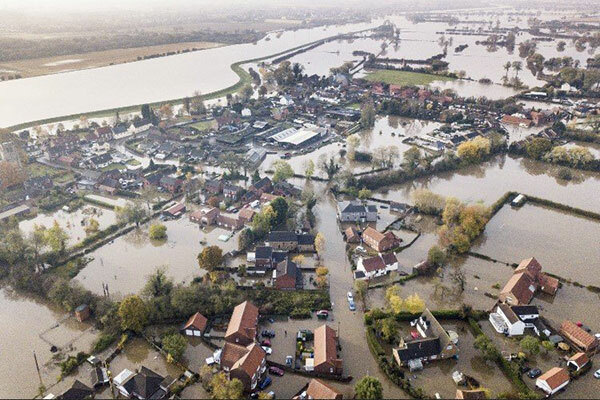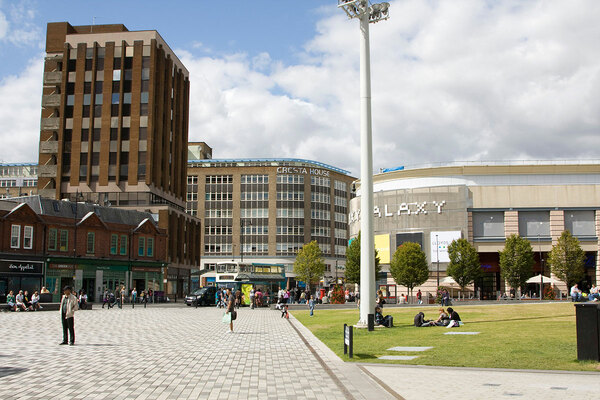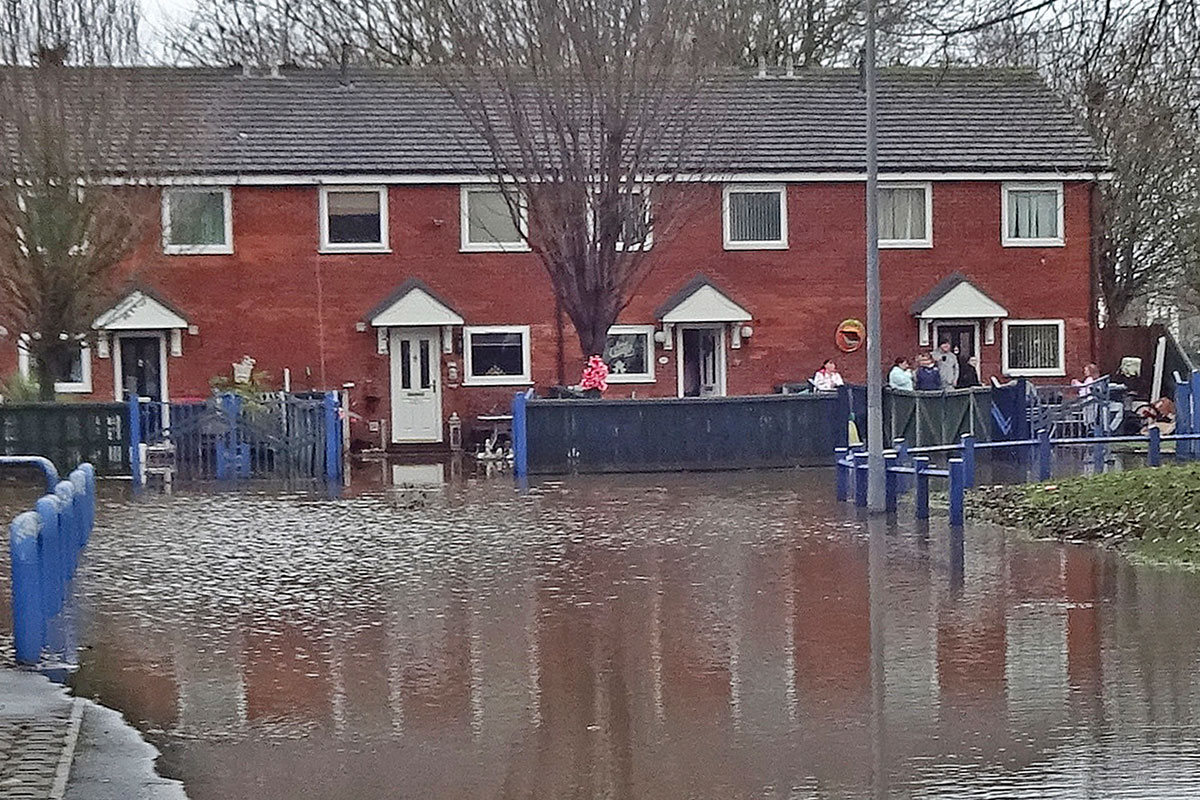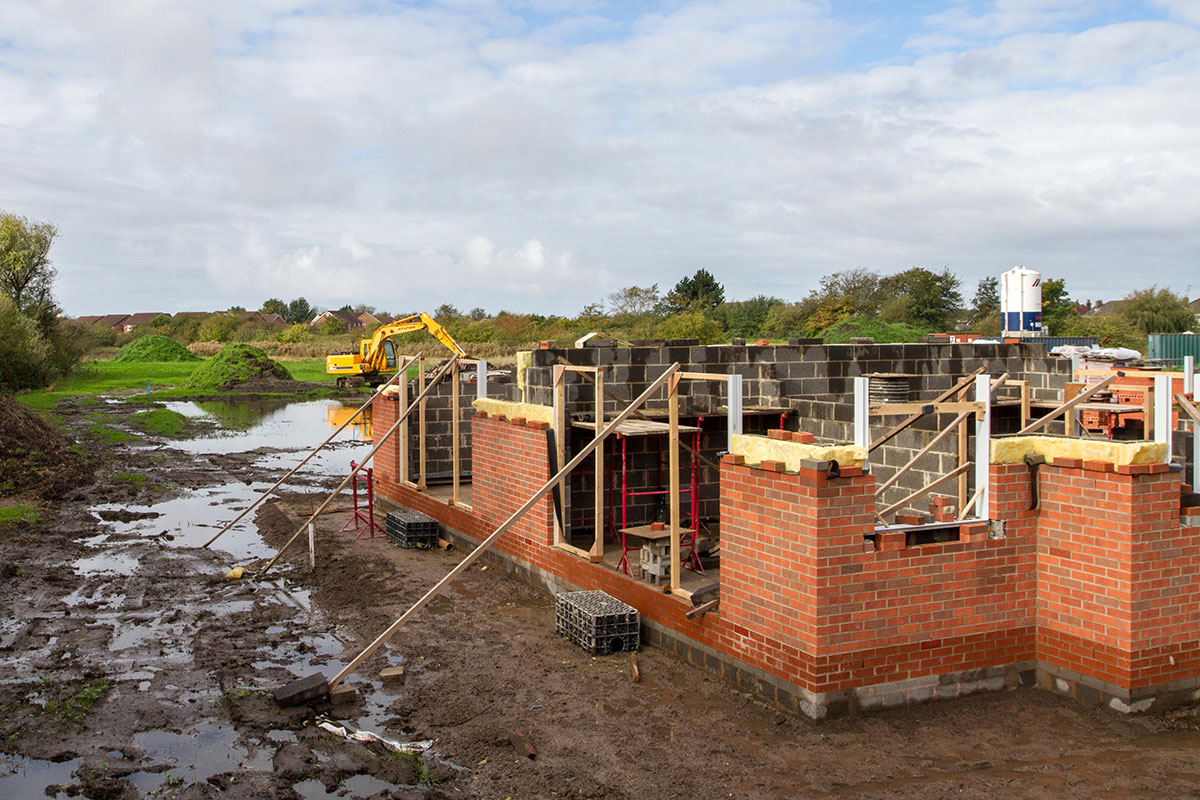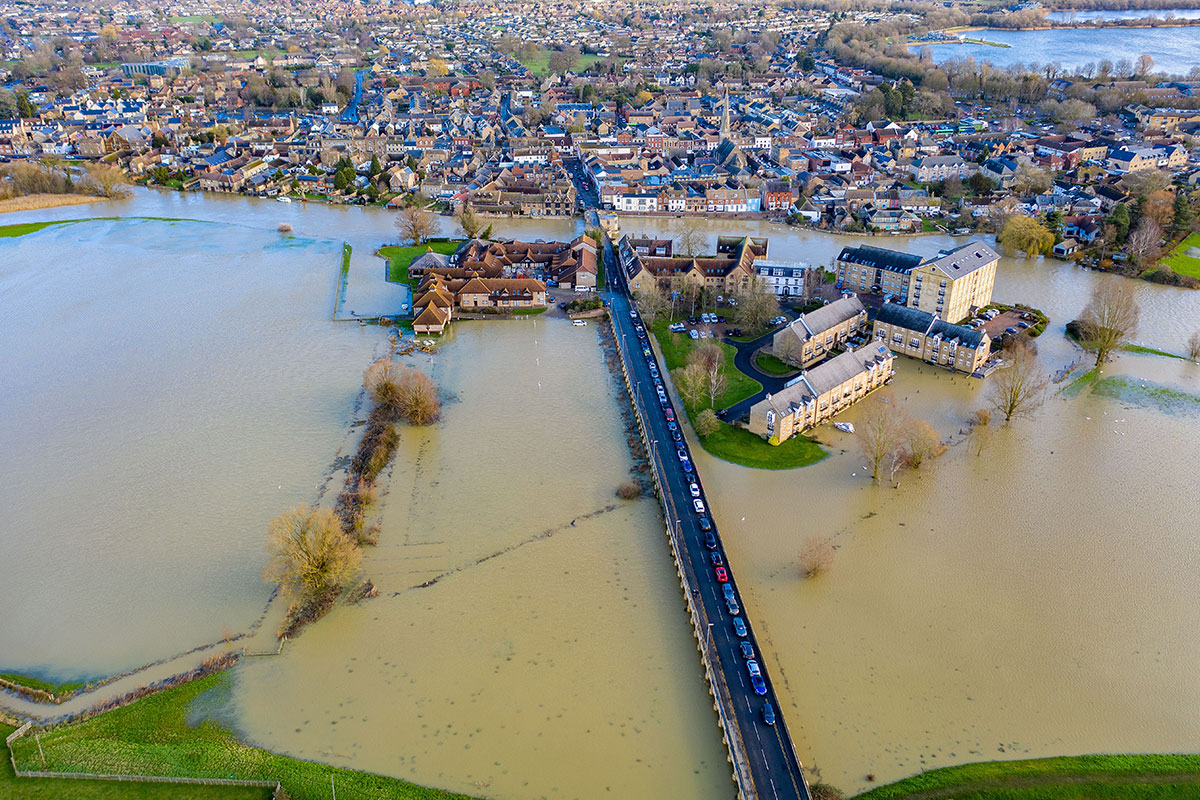
Are social landlords building homes despite the flood risk?
Alarm over building on flood plains may be concerning to social landlords as they embark on developments. Is the sector doing enough to consider the risks? Jess McCabe reports. Photography by Rex Features, Stephen Kingston and Alamy
You have probably seen the headlines: 11,000 homes to be built on land at high risk of flooding in England; the head of the Environment Agency calling for a ban on building on flood plains unless there is no alternative; 70,000 homes built since 2009 may be uninsurable due to flood risk; and calls for tightening of flood risk regulation from sector bodies. Meanwhile social landlords are being pushed to build more in a bid to help solve the housing crisis.
There are two problems here. First is that building increases the risk of flooding by reducing natural drainage – making things worse for the new and existing residents, including social tenants. Second, and most immediately, most social landlords would expect to own and manage the homes they are building for a considerable time and they have an interest not to build something that is going to be at risk of being flooded.
With even the Environment Agency (EA) warning that not enough is being done, it is a concern. After all, this is the agency on whose advice these flood-risk planning decisions are made. And there is the wild card of climate change, which may overturn assumptions on how high the risk is for any given site.
So are social landlords taking this seriously enough? Inside Housing asked housing associations of various sizes and locations across the UK to find out.
Recent stories give the impression of developers pushing ahead fairly thoughtlessly in building homes that will put residents in the path of flooding. But, perhaps unsurprisingly, none of the landlords Inside Housing spoke to felt this was happening in the sector.
For Salix Homes, this risk is not hypothetical. On Boxing Day in 2015, floods hit the North of England, flooding more than 3,000 homes and causing £150m of damage. Three hundred of those properties were the homes of Salix tenants.
“The risk of flooding has a significant influence on whether we decide to move forward with building on a site,” says Sue Sutton, executive director of operations at Salix. “Not only do we need to think about the cost of mitigating flood risk in the design of the build, but we also need to consider the human impact that flooding can have on our customers – something that we are fully aware of following the devastation of the Boxing Day 2015 floods in Lower Broughton [in Salford].”
“With the reduction in availability of land, inevitably [councils] are bringing forward and promoting brownfield sites, which are often next to water courses,” notes Oliver Boundy, development director at Southern Housing Group.
But what does that mean in practice? Most of the landlords said they follow the best advice from the agencies when deciding on sites and in planning developments.
Vicky Saunders, managing director of BTP Architects and veteran of many flood-risk projects with social landlords, says this should give plenty of comfort. “They have to consult the EA, [which carries out] a flood risk assessment, to appreciate what it is we’re building and the implications of the construction, and they have to sign off and agree that is satisfactory,” she says.
Associations appear to be taking this process seriously. “As we look to the future, being mindful of flood risk is central to how we review where we’ll build,” says Steve Trenwith, land and planning director at Sovereign. “We know that there is pressure to provide additional homes, but at the same time we have a real belief in ensuring that we must provide sustainable places for our residents for many years to come.”
This might involve passing on a site altogether; many landlords have said that they have done so. That includes Broadland, which notes sites on the North Norfolk coast. But it also includes places not associated with flood risk particularly. Bunmi Atta, director of construction at Optivo, says the housing association has turned down sites in London.
Floods in Lower Broughton, Salford, on Boxing Day in 2015
In many cases, though, the response to flood risk on a site is to change the design and include mitigation measures.
Heidi Thompson, executive director of homes and investment at First Choice Homes Oldham, notes that this is something the landlord is having to consider, despite Oldham’s high land. “At the moment we’re looking at a potential site which does pose a slightly higher risk of flooding, but there’s several things we can do to alleviate this.
“These include: installing deeper foundations, specific design specs such as building garages and utility rooms on the ground floor and living quarters on the second floor and above. We will also place water feature plants like heather, bramble and whinberry bushes into gardens, which can help,” she says.
Ms Saunders notes that she is currently working on a project that is partly in flood zone 2 and partly in 3, the highest risk level. “Is that wrong? No, because we’ve looked at it and designed it that in the event it did flood, those properties are protected,” she says. The only thing that gives her pause for thought is whether plans are followed to the letter once the contractor gets on site. “Is anyone actually checking the finished floor level? I don’t know,” she concedes.
When flooding stops development
Flooded fields on a development site in Southport. Hundreds of new homes across the country have been given the green light in the past few years despite flooding warnings
Flooding can call a halt to building plans, and if you are a relatively small landlord in a local area with a high risk then this can be a major obstacle. Wellhouse Housing Association, a 798-home association in the east end of Glasgow, perhaps knows this better than most. The association may be small, but it has three potential sites in the community that it could develop for housing. It had hoped to build 170 homes in a mix of tenures, which would have added more than 20% to its total stock.
But director Martin Wilkie-McFarlane explains: “Wellhouse has, in effect, missed out on the 2021 housebuilding targets set by the Scottish government because we were/are waiting on flood mitigation measures.”
“This is an area which has suffered flooding in the past – we are not on the banks of a river, but a covered burn [stream] runs under the community and we are on lower land immediately south of Seven Lochs Wetland Park,” he explains.
The association has commissioned a report which suggested measures that could mitigate the flood risk, but these were too expensive for a small association to take on.
“Also, we did not want to embark on such a measure when we knew that Scottish Water, the local authority and SEPA [the Scottish Environment Protection Agency] were looking at large infrastructure measures in and around the city to manage these risks,” he says.
Ultimately, this has left the association unable to build much-needed homes.
As Mr Wilkie-McFarlane puts it: “We will not develop any new homes which put residents at risk of flooding, nor which lead to environmental degradation. We must be certain that we can manage flood risks.”
Under ‘design and build’ contracts, the architects who came up with very specific measures to mitigate flood risk are not usually going back to check that the construction meets these exact specifications – one could be ensuring that floor levels are at a certain height above potential flood waters.
It is also not clear, Ms Saunders says, whether this sort of check would be carried out by building control. This may pose a particular risk when it comes to Section 106 homes, as the landlord is unlikely to have been involved in the design stage.
“Most Section 106 sites have already had flood risk mitigation strategies determined as part of the planning application process, so we rely on those,” a spokesperson for Paradigm explains.
This is yet another example of the potential gap between design and construction that has particularly concerned the sector in the light of the Grenfell fire, but also affects everything from energy efficiency performance to whether residents can trust that their homes will not flood.
Social landlords may be taking flood risk seriously – but the uncertainty means that nothing can be taken for granted.
Sign up for our development and finance newsletter
Already have an account? Click here to manage your newsletters

